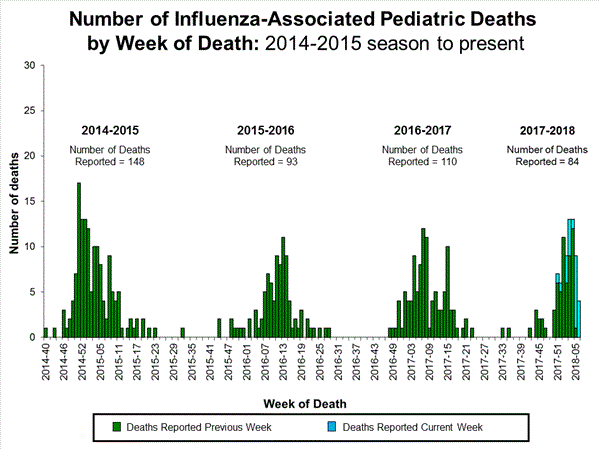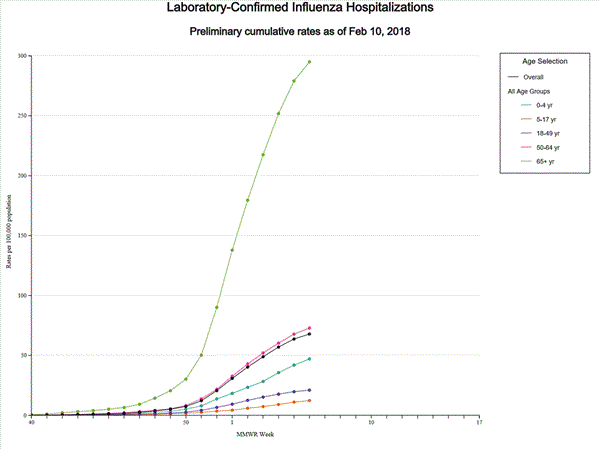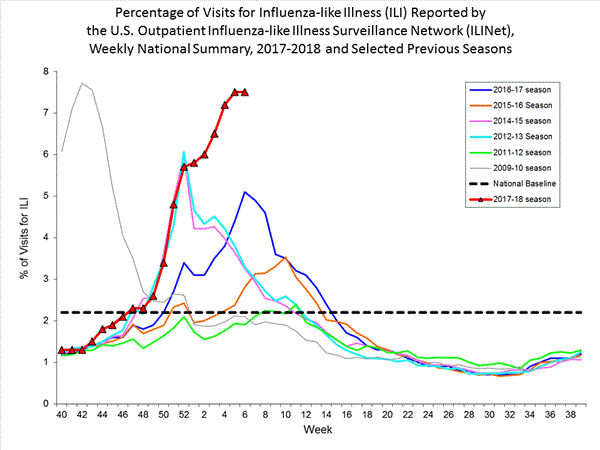Archive for February, 2018
Confronting an active shooter: “There is no level of response that is going to be inappropriate.”
Saturday, February 17th, 2018Look around you. Where are the exits?
Hide: “….Dart into a room, closet, anywhere there is a door to lock, or at least to close and barricade. A room near an elevator is good because there is likely to be reinforced construction at the core of the building…”
Turn off lights.
Stay low in your hiding place
Fight
“….scissors, bookends, chairs, a hammer, kettle bells, heavy doorstops…….
If you are strong enough, wrestle or jump the gunman if he stops to reload, which could take just seconds….
“There is no level of response that is going to be inappropriate,” Dr. Blair said. “I would encourage you to not go softly.”……”
Real-time Assay for the Detection of Filoviruses (Ebola and Marburg viruses)
Saturday, February 17th, 2018Sensitive Multiplex Real-time RT-qPCR Assay for the Detection of Filoviruses
Dedkov Vladimir G., Magassouba N’Faly, Safonova Marina V., Bodnev Sergey A., Pyankov Oleg V., Camara Jacob, Sylla Bakary, Agafonov Alexander P., Maleev Victor V., and Shipulin German A.. Health Security. February 2018, 16(1): 14-21. https://doi.org/10.1089/hs.2017.0027
“……The high specificity and sensitivity of the assay make it useful for clinical and epidemiologic investigations in the field of filovirus fever diseases and their etiological agents…..”
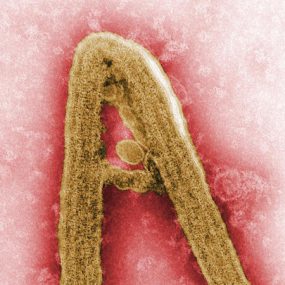
Filoviruses belong to a virus family called Filoviridae and can cause severe hemorrhagic fever in humans and nonhuman primates. So far, only two members of this virus family have been identified: Marburgvirus and Ebolavirus. Five species of Ebolavirus have been identified: Taï Forest (formerly Ivory Coast), Sudan, Zaire, Reston and Bundibugyo. Ebola-Reston is the only known Filovirus that does not cause severe disease in humans; however, it can still be fatal in monkeys and it has been recently recovered from infected swine in South-east Asia.
Structurally, filovirus virions (complete viral particles) may appear in several shapes, a biological features called pleomorphism. These shapes include long, sometimes branched filaments, as well as shorter filaments shaped like a “6”, a “U”, or a circle. Viral filaments may measure up to 14,000 nanometers in length, have a uniform diameter of 80 nanometers, and are enveloped in a lipid (fatty) membrane. Each virion contains one molecule of single-stranded, negative-sense RNA. New viral particles are created by budding from the surface of their hosts’ cells; however, filovirus replication strategies are not completely understood.

Filovirus history
The first Filovirus was recognized in 1967 when a number of laboratory workers in Germany and Yugoslavia, who were handling tissues from green monkeys, developed hemorrhagic fever. A total of 31 cases and 7 deaths were associated with these outbreaks. The virus was named after Marburg, Germany, the site of one of the outbreaks. In addition to the 31 reported cases, an additional primary case was retrospectively serologically diagnosed.
After this initial outbreak, the virus disappeared. It did not reemerge until 1975, when a traveler, most likely exposed in Zimbabwe, became ill in Johannesburg, South Africa. The virus was transmitted there to his traveling companion and a nurse. A few sporadic cases and 2 large epidemics (Democratic Republic of Congo in 1999 and Angola in 2005) of Marburg hemorrhagic fever (Margurg HF) have been identified since that time. For information on known Marburg HF cases and outbreaks, please refer to the chronological list.
Ebolavirus was first identified in 1976 when two outbreaks of Ebola hemorrhagic fever (Ebola HF) occurred in northern Zaire (now the Democratic Republic of Congo) and southern Sudan. The outbreaks involved what eventually proved to be two different species of Ebola virus; both were named after the nations in which they were discovered. Both viruses showed themselves to be highly lethal, as 90% of the Zairian cases and 50% of the Sudanese cases resulted in death.
Since 1976, Ebolavirus have appeared sporadically in Africa, with small to midsize outbreaks confirmed between 1976 and 1979. Large epidemics of Ebola HF occurred in Kikwit, Democratic Republic of Congo in 1995, in Gulu, Uganda in 2000, in Bundibugyo, Uganda in 2008, and in Issiro, DRC in 2012. Smaller outbreaks were identified in Gabon, DRC, and Uganda. For information on known Ebola HF cases and outbreaks, please refer to the chronological list.
Animal hosts
It appears that Filoviruses are zoonotic, that is, transmitted to humans from ongoing life cycles in animals other than humans. Despite numerous attempts to locate the natural reservoir or reservoirs of Ebolavirus and Marburgvirus species, their origins were undetermined until recently when Marburgvirus and Ebolavirus were detected in fruit bats in Africa. Marburgvirus has been isolated in several occasions from Rousettus bats in Uganda.
Spreading Filovirus infections
In an outbreak or isolated case among humans, just how the virus is transmitted from the natural reservoir to a human is unknown. Once a human is infected, however, person-to-person transmission is the means by which further infections occur. Specifically, transmission involves close personal contact between an infected individual or their body fluids, and another person. During recorded outbreaks of hemorrhagic fever caused by a Filovirus infection, persons who cared for (fed, washed, medicated) or worked very closely with infected individuals were especially at risk of becoming infected themselves. Nosocomial (hospital) transmission through contact with infected body fluids – via reuse of unsterilized syringes, needles, or other medical equipment contaminated with these fluids – has also been an important factor in the spread of disease. When close contact between uninfected and infected persons is minimized, the number of new Filovirus infections in humans usually declines. Although in the laboratory the viruses display some capability of infection through small-particle aerosols, airborne spread among humans has not been clearly demonstrated.
During outbreaks, isolation of patients and use of protective clothing and disinfection procedures (together called viral hemorrhagic fever isolation precautions or barrier nursing) has been sufficient to interrupt further transmission of Marburgvirus or Ebolavirus, and thus to control and end the outbreak. Because there is no known effective treatment for the hemorrhagic fevers caused by Filoviruses, transmission prevention through application of viral hemorrhagic fever isolation precautions is currently the centerpiece of Filovirus control.
In conjunction with the World Health Organization (WHO), CDC has developed practical, hospital-based guidelines, titled Infection Control for Viral Haemorrhagic Fevers in the African Health Care Setting. The manual can help healthcare facilities recognize cases and prevent further hospital-based disease transmission using locally available materials and few financial resources.
Brazil: 407 yellow fever cases have been reported in that country since July of 2017, including 118 deaths.
Saturday, February 17th, 2018“…..Brazil’s Health Ministry says a massive yellow fever vaccination campaign has reached less than 20 percent of the targeted population since it began three weeks ago.
Authorities have confirmed 407 cases in the current outbreak, including in areas not previously considered at risk. Of those, 118 have died…..”
2017-2018 Influenza Season Week 6 ending February 10, 2018: influenza activity remained elevated.
Saturday, February 17th, 2018Synopsis:
During week 6 (February 4-10, 2018), influenza activity remained elevated in the United States.
- Viral Surveillance: The most frequently identified influenza virus subtype reported by public health laboratories during week 6 was influenza A(H3). The percentage of respiratory specimens testing positive for influenza in clinical laboratories remained elevated.
- Pneumonia and Influenza Mortality: The proportion of deaths attributed to pneumonia and influenza (P&I) was above the system-specific epidemic threshold in the National Center for Health Statistics (NCHS) Mortality Surveillance System.
- Influenza-associated Pediatric Deaths: Twenty-two influenza-associated pediatric deaths were reported.
- Influenza-associated Hospitalizations: A cumulative rate of 67.9 laboratory-confirmed influenza-associated hospitalizations per 100,000 population was reported.
- Outpatient Illness Surveillance:The proportion of outpatient visits for influenza-like illness (ILI) was 7.5%, which is above the national baseline of 2.2%. All 10 regions reported ILI at or above region-specific baseline levels. New York City, the District of Columbia, Puerto Rico and 43 states experienced high ILI activity; two states experienced moderate ILI activity; three states experienced low ILI activity; and two states experienced minimal ILI activity.
- Geographic Spread of Influenza:The geographic spread of influenza in Puerto Rico and 48 states was reported as widespread; one state reported regional activity; the District of Columbia, Guam and one state reported local activity; and the U.S. Virgin Islands reported no activity.
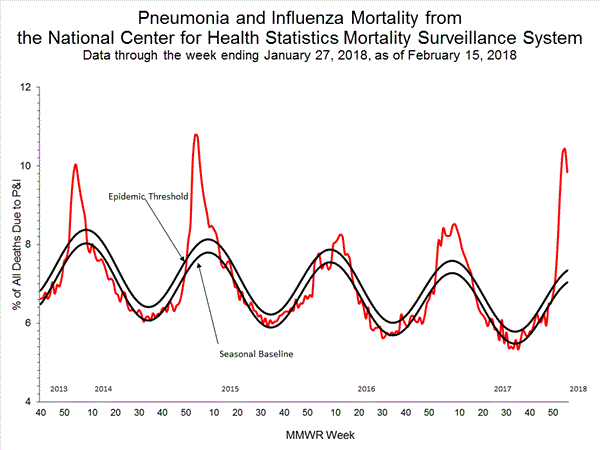
M 7.2 – 37km NE of Pinotepa de Don Luis, Mexico; Mexico is one of the world’s most seismically active regions.
Saturday, February 17th, 2018Estimated Economic Losses

Seismotectonics of Mexico
Located atop three of the large tectonic plates, Mexico is one of the world’s most seismically active regions. The relative motion of these crustal plates causes frequent earthquakes and occasional volcanic eruptions. Most of the Mexican landmass is on the westward moving North American plate. The Pacific Ocean floor south of Mexico is being carried northeastward by the underlying Cocos plate. Because oceanic crust is relatively dense, when the Pacific Ocean floor encounters the lighter continental crust of the Mexican landmass, the ocean floor is subducted beneath the North American plate creating the deep Middle American trench along Mexico’s southern coast. Also as a result of this convergence, the westward moving Mexico landmass is slowed and crumpled creating the mountain ranges of southern Mexico and earthquakes near Mexico’s southern coast. As the oceanic crust is pulled downward, it melts; the molten material is then forced upward through weaknesses in the overlying continental crust. This process has created a region of volcanoes across south-central Mexico known as the Cordillera Neovolcánica.
The area west of the Gulf of California, including Mexico’s Baja California Peninsula, is moving northwestward with the Pacific plate at about 50 mm per year. Here, the Pacific and North American plates grind past each other creating strike-slip faulting, the southern extension of California’s San Andreas fault. In the past, this relative plate motion pulled Baja California away from the coast forming the Gulf of California and is the cause of earthquakes in the Gulf of California region today.
Mexico has a long history of destructive earthquakes and volcanic eruptions. In September 1985, a magnitude 8.0 earthquake killed more than 9,500 people in Mexico City. In southern Mexico, Volcán de Colima and El Chichón erupted in 2005 and 1982, respectively. Paricutín volcano, west of Mexico City, began venting smoke in a cornfield in 1943; a decade later this new volcano had grown to a height of 424 meters. Popocatépetl and Ixtaccíhuatl volcanos (“smoking mountain” and “white lady”, respectively), southeast of Mexico City, occasionally vent gas that can be clearly seen from the City, a reminder that volcanic activity is ongoing. In 1994 and 2000 Popocatépetl renewed its activity forcing the evacuation of nearby towns, causing seismologists and government officials to be concerned about the effect a large-scale eruption might have on the heavily populated region. Popocatépetl volcano last erupted in 2010.
“A former teacher at a charter high school and his twin brother were arrested on Thursday on federal bomb-making charges, stockpiling more than 32 pounds of ingredients for explosives in a closet in their apartment in the Bronx…..”
Friday, February 16th, 2018“…..The teacher paid high school students $50 an hour to break apart fireworks to extract the explosive powder…..”

Marjory Stoneman Douglas High School in Parkland, FL: Minute-by-Minute
Friday, February 16th, 2018“…..Wed., Feb. 14
2:19 p.m.
Police say Cruz is dropped off at the school by an Uber driver. The school is preparing for dismissal as he arrives so the gates are unlocked to allow cars and buses to enter.
Wearing a school shirt, he carries a black duffle bag and a black backpack inside.
Reports say a school staffer recognizes Cruz and warns a co-worker by radio.
2:20 p.m.
A 15-year-old student says he encounters Cruz loading a rifle inside a second-floor bathroom, according to news sources. “You’d better get out of here,” Cruz tells the student. “Things are going to start getting messy.” The student flees and alerts a staffer.
2:21 p.m.
Police say Cruz activates a fire alarm inside the school. Students begin to evacuate. Cruz opens fire with a .223 caliber AK-15 semiautomatic rifle in a first-floor hallway. Hearing the shots, a staffer broadcasts a “Code Red” alert over the intercom, signaling a campus lockdown.
Students and teachers take cover in classrooms. Some students flee the school and take cover at a nearby Walmart. Cruz fires into four classrooms and goes to the second floor, continuing to shoot. Police later calculate that more than 100 rounds are fired.
2:23 p.m.
Police receive multiple 911 calls of shooting taking place.
2:25 p.m.
The shooting stops……..”
2/15/1898: A massive explosion of unknown origin sinks the USS Maine in Havana harbor, killing 260 American crew members
Thursday, February 15th, 2018The 10 deadliest mass shootings in modern US history
Thursday, February 15th, 2018


